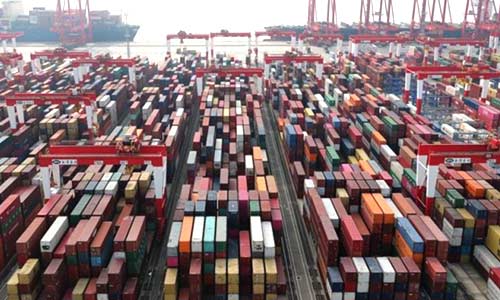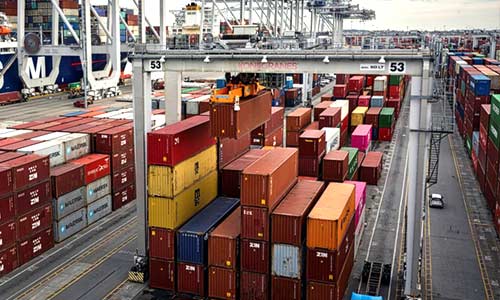The global demand for freight has increased significantly over the years and is bound to set new records in years to come. This also means that the supply has to keep up and a congested freight network among other factors could cause delays and also short shipments.
Short shipments are containers or cargo within a container, that are part of a larger consignment, that wasn’t fulfilled or shipped due to various reasons. Containers and goods can be short shipped due to container shortages, insufficient vessel space, missing documentation, port issues and several other reasons.
Short shipments can result in delays and can cause a chain reaction of events that require expensive solutions. This article will go into detail on what short shipping means, why it happens and how to arrange for possible alternatives in case cargo is short shipped.
What Does It Mean When Something Is Short Shipped?
A short shipment occurs when a shipping container or a portion of the shipment did not get fulfilled or did not get loaded on the intended vessel. A short shipped scenario can happen due to various reasons that are within or beyond the control of the shipper, port, carrier or consignee.
When an order is short shipped, the remainder of the cargo that did not get loaded and shipped, will be delayed. This scenario could lead to storage and possibly additional transportation costs. Short shipments occur in every mode of transport including rail, road, sea, and air.
Example of a Short Shipment
A buyer places an order for 10 x 20’ containers of red wine. The shipper of the cargo loads 10 x 20′ containers of wine and delivers them to port. While the containers are staged in the port, a report shows that two containers of wine did not pass the quality assessment and need to be unloaded.


The shipper gives the freight forwarder the instruction to only ship 8 x 20′ containers, while requesting to pull the remaining 2 x 20′ out of the port for further inspection. In this scenario, the order was short shipped.
What Are Reasons For Cargo Being Short Shipped?
There are several reasons why short shipments can occur. Some scenarios include production issues such as quality or volume of the product or carrier and port related issues such as lack of containers or shut outs.
They can also happen by a consignee’s request due to wrong order quantity or postponement of certain cargo for other reasons. Let’s take a look at these reasons in more detail.
1. Cargo Fulfillment Issues by Shipper
There can be a lack of stock or issues in the quality of goods that can delay order fulfilment. It can sometimes also be a result of raw materials that did not arrive in time for manufacturing.
When this happens, the shipment is booked, but parts of the shipment cannot be fulfilled. This will result in a short shipment, as the shipper is unable to fulfil the entire order.
2. Container & Equipment Shortages
Container and equipment shortages can be a result of port congestion, whereby importers have not yet taken delivery of their shipments and carriers don’t have enough empty containers available.
This scenario can also occur when there are trade imbalances. Certain ports or regions may have a shortage of equipment if there are far greater exports and imports.
3. Vessel Space Issues
Depending on shipping line, situations such as loading priority, projected revenue of a shipment, or a container unable to gate within the cutoff time can result in container shut-out. A shipment that has multiple containers could result in some being short shipped.
4. Container Issues
There are cases where containers are loaded with items that exceed the allowable loading weight and the port cannot lift the container, due to crane capacity limitations. Assuming this is the case, the container cannot be loaded on to the vessel, unless the weight is reduced.
5. Incomplete Customs Clearance
When it comes to regulatory requirements, shipments must be successfully customs cleared. In the event where certain containers are misdeclared or undeclared, it cannot be loaded onto the intended vessel.
6. Missing Documentation
When processing export documents, there are possibilities that certain commodities or destination countries may require regulatory approval at origin. In order to comply, all documentation needs to be presented and submitted accordingly.
If the shipper was unable to fulfil this regulatory requirement, local customs can order containers not to be loaded on the intended vessel until all documentation is complete.
7. Port Issues
One of the more common events that occur is port congestion. When a port is congested, berthing time for certain vessels may be reduced to facilitate a faster turnaround. This could mean that certain containers may not make it on board in time, possibly leading to a short shipment.
8. Load Plan
In the case of flat rack and open-top containers which are out of gauge cargo and a source of high revenue, the carrier might opt to prioritize these loads first instead of the standard containers. Once containers are opted out of the load plan, they will not get loaded onto the vessel.
9. Consignee Request
A consignee can sometimes request to put a hold on a shipment or certain containers of a shipment. This can be due to quality inspection related issues or postponement of cargo receiving.
There are also isolated issues where consignees cannot receive containers due to port issues or insufficient storage options at the destination country. Therefore, they may choose to short ship cargo, to the next sailing date.
What to Do When Something Is Short Shipped?
As the nature of every shipment is different, operational challenges and corresponding solutions will depend on the actual situation. Here are some possible solutions in the event of a short shipment.
| Short Shipped Issues | How to Proceed |
| Cargo fulfillment issues by shipper | If the shipper is not able to fulfill the entire shipment, one quick solution is to airfreight the remaining batch. If there is no urgency, you can simply rebook the short shipment on the next vessel. |
| Container & equipment shortage | Assuming rates are acceptable, have a backup carrier. Recheck sailing schedules and ETA to update the customer. |
| Vessel space issues | Check the closest sailing date and only arrange container pull-out if costs and schedule are acceptable. If possible, arrange a new shipment with another carrier. You can also opt to get containers loaded onto the next vessel or ship the short shipment via air freight. |
| Container issues | Work with a carrier or freight forwarder on a possible cut-off extension to catch the intended vessel or rebook with another carrier that has enough containers for the required volume. In the worst case, pull containers back to your premise and unload cargo or switch containers. |
| Incomplete customs clearance | Recheck declared items and regulatory requirements. If the current vessel schedule is not viable, reprocess documents for export customs clearance and rebook shipment to the next vessel. |
| Missing documentation | Recheck declared commodity and ensure that it is allowed for export and import. In future, check this beforehand and work with related agencies if required. |
| Port issues | Request for an extension of cutoff. From the time the container leaves the shipper’s premises, monitor actual arrival at the port. If a port is congested, containers may be loaded at another port which is nearby. Work with your freight forwarder or consider other modes of transport. |
| Load plan | This may happen if shipping lines have issued container release, but have problems during actual gate-in of containers. Verify issues with cargo weight or nature of cargo. Recheck and work on next possible sailing. |
| Consignee request | Keep shippers and agents updated and confirm when shipment will move. Work with carriers to rebook the shipment to the next intended sailing |
Short Shipped vs Short Landed
Short shipped is often confused with short landed shipments. While both revolve around shipping shortages, there is a fundamental difference between both of these terms.
A short landed scenario occurs when certain containers of a shipment have not been discharged at the intended destination port. It may also not have been loaded in the transshipment port or it may not have been retained on board.
This can also happen due to many reasons. In that sense short shipments occur at the origin, whereby short landed occurs at the destination.
Below is an example of a short landed scenario, and how it differs from short shipments.
Short Landed Example
A shipment contains two containers. 1 x 20’ containing non-DG cargo and a 1 x 40’ Class 9 DG cargo. The port of discharge can unload the 1 x 20’ container but cannot do the same for the dangerous cargo because it needs a direct-to-truck arrangement.
Considering the danger the cargo may pose, the port cannot assume risk. The only recourse of the shipping line is to retain the 1 x 40’ aboard and bring it back to the transshipment port or origin port for proper coordination.
In this scenario, the shipment was short landed, as one of the two containers was not unloaded at the port of discharge.

Get Free Course Access
If you enjoyed the article, don’t miss out on our free supply chain courses that help you stay ahead in your industry.

Andrew Lin
Co-Founder & Writer
at freightcourse
About the Author
Andrew is a multi-business owner with over 12 years of experience in the fields of logistics, trucking, manufacturing, operations, training, and education.
Being the co-founder of freightcourse has given him the ability to pursue his desire to educate others on manufacturing and supply chain topics.
Follow us